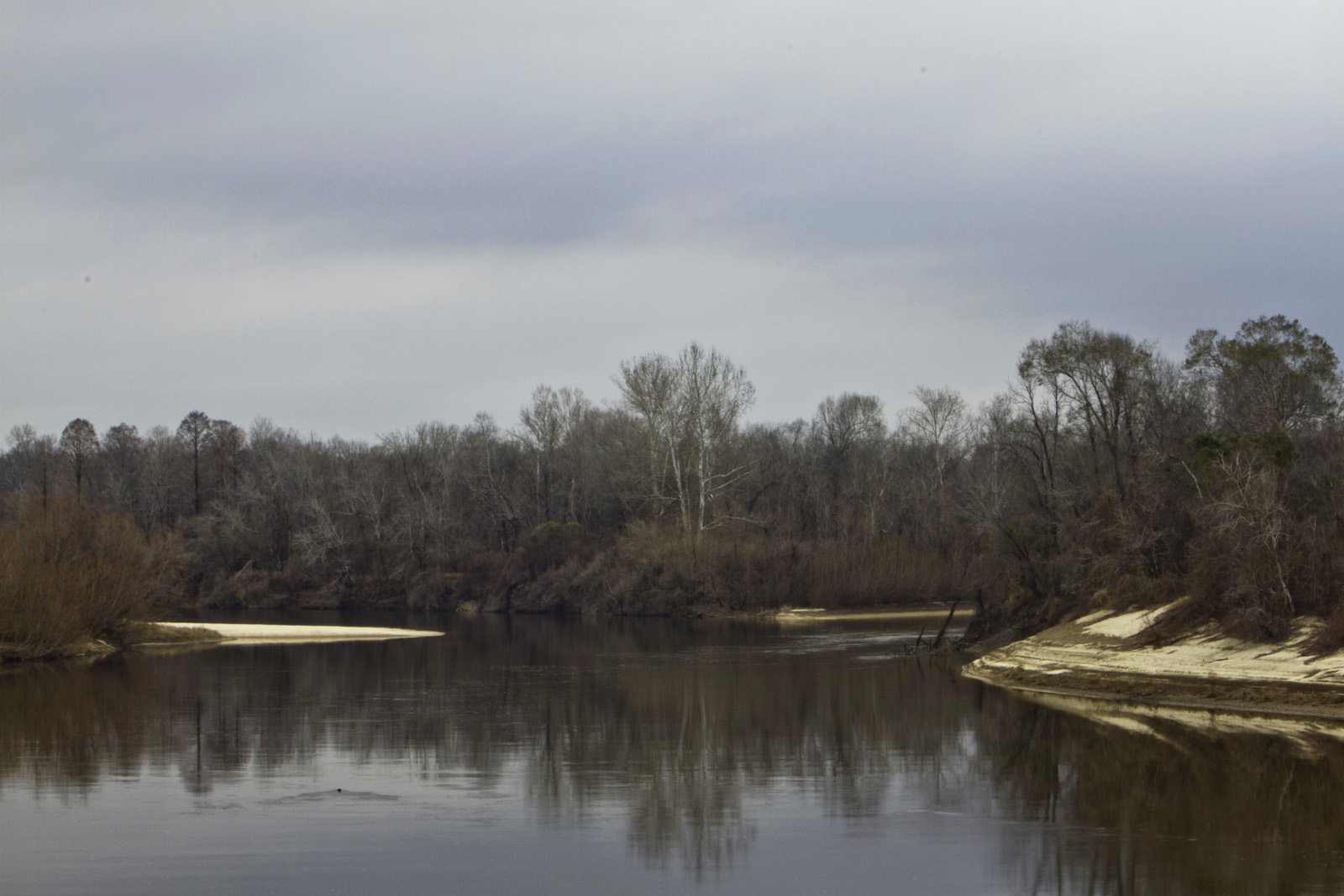Impacts from sedimentation, flooding and habitat fragmentation are being reversed or prevented.
A strong sense of heritage and local action has allowed the Pascagoula River to remain one of the largest undammed rivers in the lower 48 states.
Specific conservation targets in the Pascagoula River Watershed
- Spawning areas: Anadromous fish such as Gulf sturgeon, Alabama shad and striped bass migrate from the saltwater of the Gulf Coast into the freshwater of the Pascagoula River to spawn.
- Pearl darter: This rare, small fish is only found in the Pascagoula River drainage and the Pearl River drainage areas and nowhere else.
- Swallow-tailed kite: These elegant birds are among the most adept and acrobatic fliers of all raptors. They spend their winters in South America but in the summer they can be found flying high above the Pascagoula River.
- Mississippi sandhill crane: A critically endangered subspecies found only in Mississippi, these birds do not migrate. There are only about 100 of these beautiful birds left in the wild.
- Yellow-blotched map turtle: This rare turtle is found only in the Pascagoula River and its tributaries.
- Bottomland hardwood forest: Lack of hydrologic modification along the Pascagoula River has helped retain a high degree of ecological integrity within the floodplain forest along the Pascagoula corridor. This forest habitat is critical for species like the federally-threatened Louisiana black bear.
- Longleaf pine upland: This fire-dependent ecosystem is home to many rare, threatened and endangered species of plants and animals such as the red-cockaded woodpecker.
- Pascagoula and Escatawpa marshes are home to several rare and endangered species: swallow-tailed kite, bald eagle, northern harrier, peregrine falcon, gull-billed tern, Gulf sturgeon, diamondback terrapin, Mississippi redbelly turtle, gopher tortoise, Spanish ambersnail, Florida flatcoil, tall prairie-gentian, white arum, Texas spider-lily.
- Seagrass beds provide spawning grounds, wave protection, oxygen production and protection against coastal erosion.
Stresses to the Pascagoula River Watershed Ecosystem
- Sedimentation: Sediment comes from many sources: agricultural fields, woodlands, highway road banks, construction sites, and mining operations. It affects water quality physically, chemically, and biologically. Sedimentation destroys fish spawning beds and clogs streams. Sediment often carries organic matter, animal or industrial wastes, nutrients, and chemicals that may be toxic to aquatic plants and animals.
- Proposed dams: Dams slow rivers and this disturbance may damage or destroy patterns of ecology. Dams can also disrupt the natural temperature of the river and change the oxygen content. Organisms that depend on a regular cycle of temperatures may be unable to adapt; the balance of fauna may be affected by the change of oxygen content. Dams also prevent fish from reaching spawning grounds.
- Dredging is the repositioning of soil, often done to improve navigation of waterways. Dredging can cause harmful environmental impacts such as releasing toxic chemicals from bottom sediments into the water, and short-term increases in turbidity (cloudiness in water), which can affect species' metabolism and interfere with spawning. Dredging also causes significant impacts to aquatic habitats.
- Water withdrawal is the removal of freshwater from water resources for use in agriculture, industry or domestic purposes. Over-withdrawal of water can push aquatic ecosystems out of natural equilibrium.
- Land conversion and forest fragmentation lessens habitat for migratory birds and other species that require large tracts of land to survive.
- Incompatible silviculture: Silviculture is the science of controlling establishment, growth, composition, health, and quality of forests to meet diverse needs and values of landowners, society and the many cultures throughout the globe. Incompatible silviculture degrades forest habitats and contributes significantly to sedimentation of streams and rivers.
- Alteration of fire regime: In fire-dependent ecosystems such as the longleaf pine upland, fire is necessary for seed dispersal and control of invasive species.
Non-Native Invasive Species
- Cogongrass: Although classified as the seventh worst weed in the world it is still sold as an ornamental under the name of Japanese bloodgrass or "Red Baron" bloodgrass. Cogongrass forms dense mats that crowd out native vegetation and forage plants and displaces ground-nesting species such as turkey and bobwhite quail. As cogongrass grows along river banks it prevents turtles from reaching nesting sites.
- Chinese privet: Because of dense stand production, privet crowds out native plants and trees, especially hardwoods.
- Chinese tallow tree: Also called "popcorn trees," Chinese tallow disrupts the natural balance of an ecosystem by shading native vegetation and releasing toxins into the soil, making it difficult for native plants to grow.
The Nature Conservancy is using various strategies to protect the Pascagoula River Watershed
- Build conservation alliances
- Strengthen local partner organizations
- Acquire land
- Secure conservation easements
- Restore ecosystems through fire management
- Promote compatible development and ecotourism
- Further scientific knowledge of the ecosystem
Conservation results
- 70,000 acres under public and private conservation protection
- Pascagoula River Basin Alliance established in 2001
